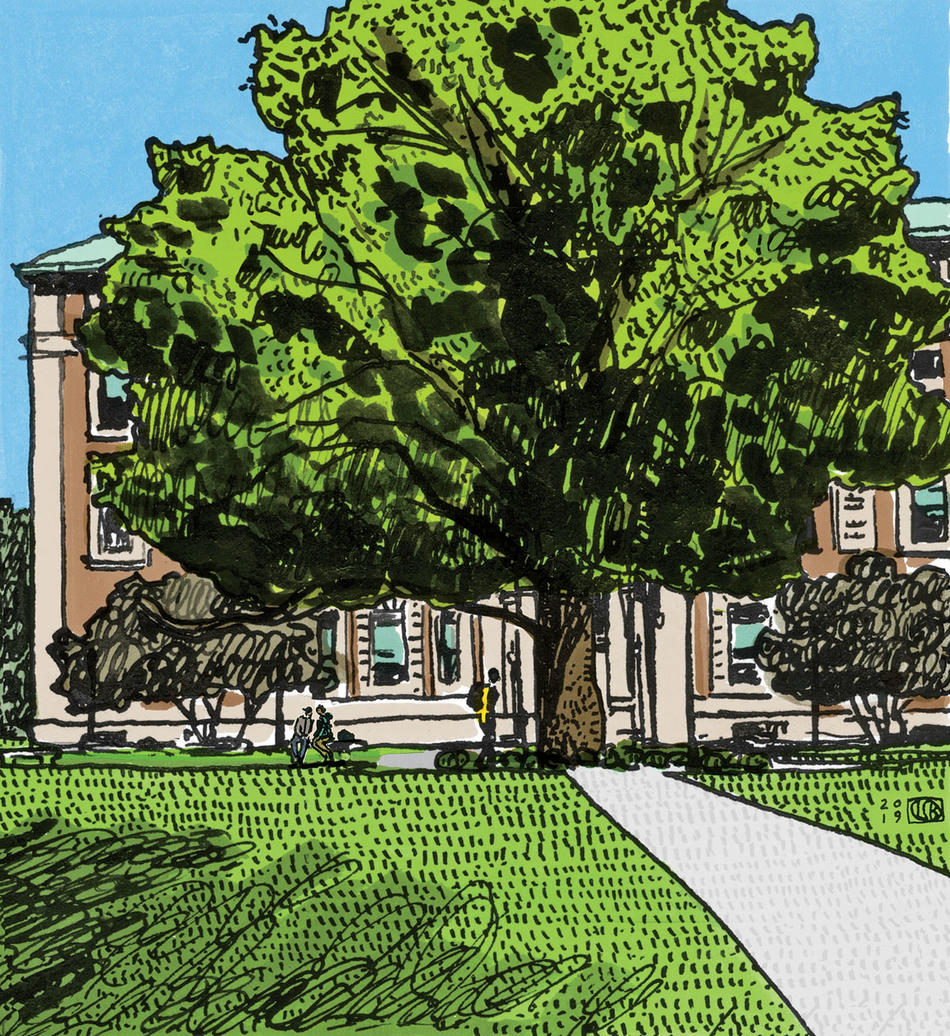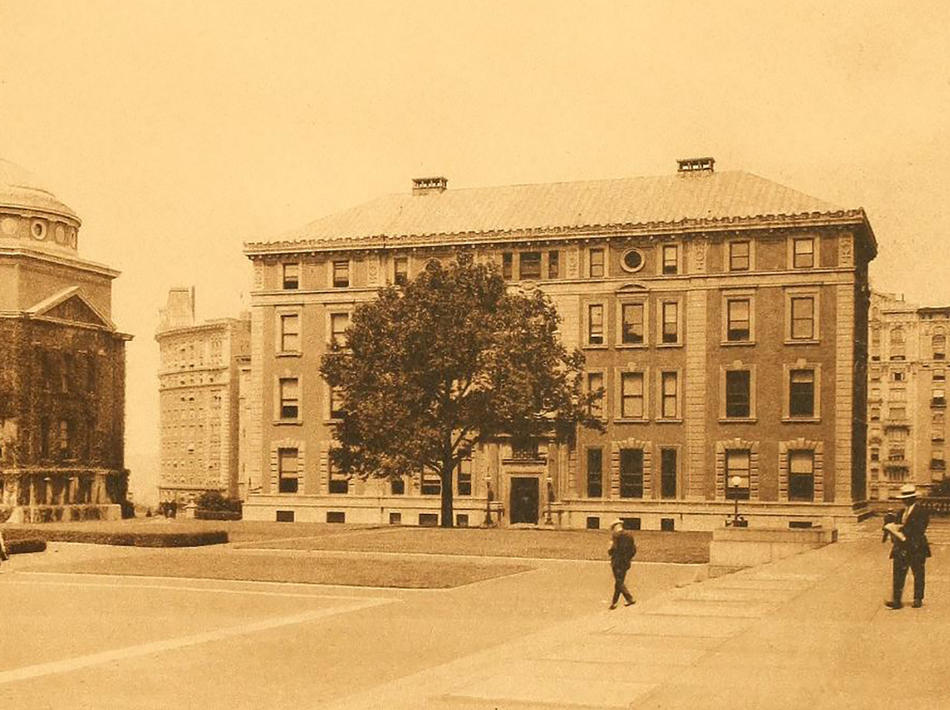Sometime before 1897, the year the University moved from Madison Avenue to Morningside Heights, a tender sapling dug its roots in the soil on what is now the west side of Low Library. Having witnessed the transformation of the gardens and pastures of the old Bloomingdale Asylum into the landscaped quadrangles of Columbia, the hundred-foot-tall tree stands today in wide-armed serenity in front of Mathematics Hall. With its stout, mottled trunk and gnarled branches tufted with broad, serrated leaves, this American sycamore (Platanus occidentalis) bears the dignity of arboreal maturity: no passerby would be surprised to learn that, of the 438 trees on the Morningside campus, it is the oldest.
How old, exactly? “That’s hard to know unless you want to spend a lot of money or cut it down and look at the rings,” says Bradley Larson, grounds manager with Columbia Facilities. “We won’t do that, obviously.” When pressed, Larson puts the tree at 125, give or take — not even halfway through the average lifespan of a sycamore, which can live as long as five hundred years. “It’s a hardy tree, native to this area,” Larson says. It is not related to the sycamore fig tree of the Bible, but it is cousin to the London plane trees around Low Library. “You can find sycamores in swamp-type conditions or at higher elevations, so they can withstand more stress than a lot of other species, like the red oaks in front of Lewisohn.”
That hardiness was recently put to the test. Last year, the University replaced the stairs connecting Mathematics to Havemeyer with a wheelchair-accessible ramp. The plan was to refurbish the nearby walkways as well, but the sycamore’s roots had made incursions into the adjacent footpath, forcing Facilities to find a creative way to fix the path while preserving a tree that had watched Mathematics rise brick by brick when John Howard Van Amringe 1860CC, the first official dean of Columbia College, led the math department. A tree that had seen generations of students and faculty pass through the building’s doors and, for a few days in 1968, dangle from its windows; that had given shade to great mathematicians like Fields medalist Jesse Douglas 1920GSAS, Nobel laureate Herbert Hauptman ’39GSAS, ’90HON, computer scientist John Backus ’49GS, ’50GSAS, and number theorist Shou-Wu Zhang ’91GSAS.
“The scope of the walkway project was expanded to protect the tree’s roots,” Larson says. Rather than cutting into them to make way for a path, Facilities employed a groundskeeping sleight of hand: it raised, imperceptibly, the elevation of the entire lawn, averting contact with the tree altogether. “We did have to expose some roots in order to know where they were, so we could avoid damaging them,” says Larson. Workers used compressed air to blow the soil away from the unearthed roots, which they wrapped in burlap during construction.
Two new footpaths, built above root level, go around the tree, which is now bordered, moat-like, by an eight-foot radius of mulch fringed by boxwood shrubs. The tree has become an unofficial campus monument. In winter it stands bare and forked; in summer its shaggy greenery casts deep shadows on the red-brick walkway and façade of Mathematics. And fall will bring, as Larson can attest, a shower of leaves and a “pretty good cleanup.”
If the sycamore stays healthy, this cycle could hold for at least another century. “This tree has been on campus longer than anyone,” he says, “and I hope it will be around when we’re all gone.”
This article appears in the Summer 2019 print edition of Columbia Magazine with the title "Made in the Shade."




